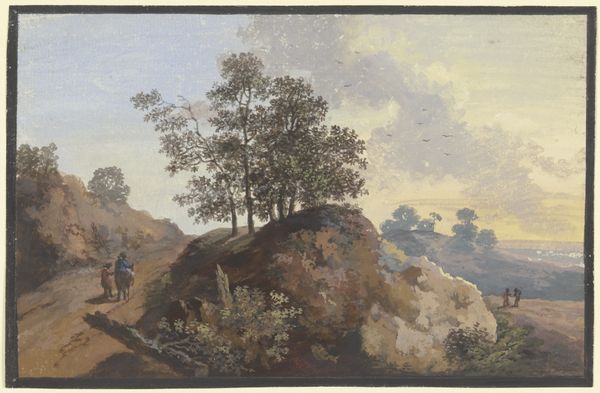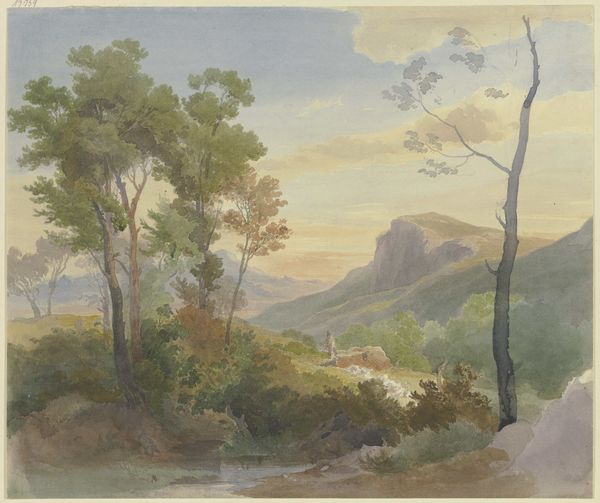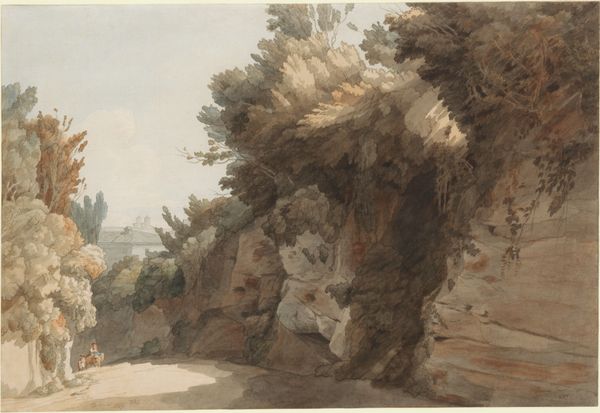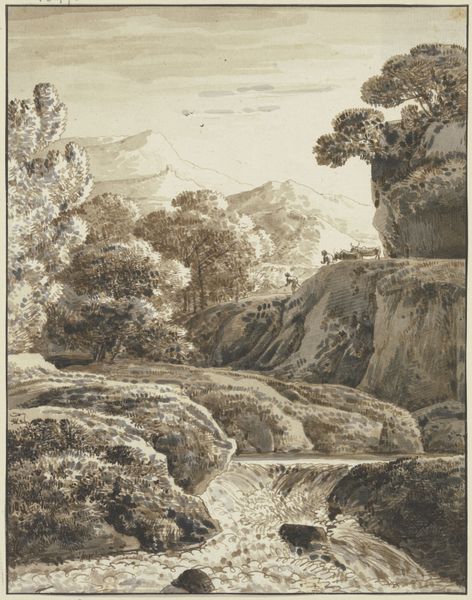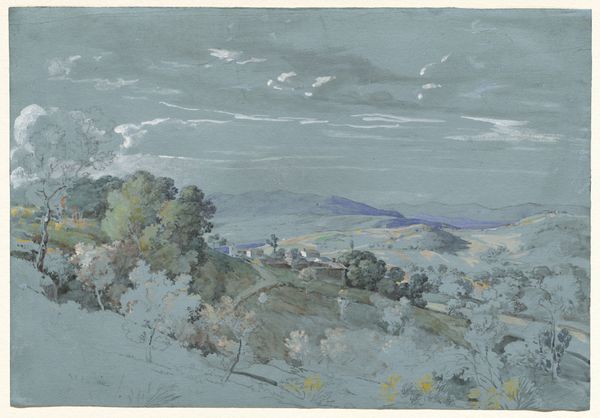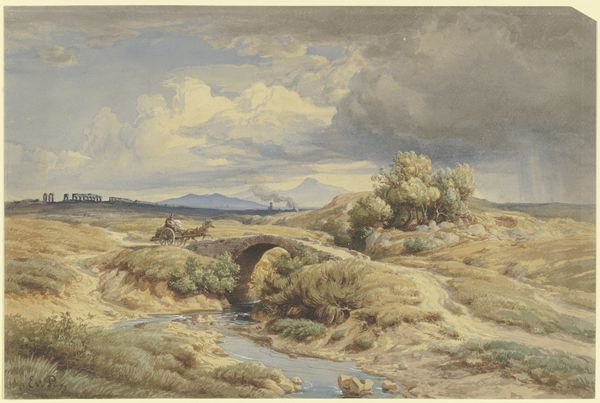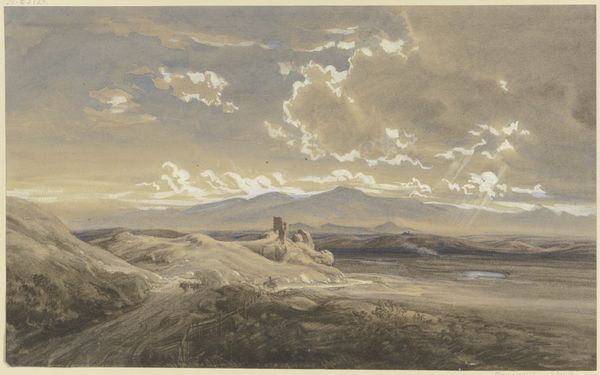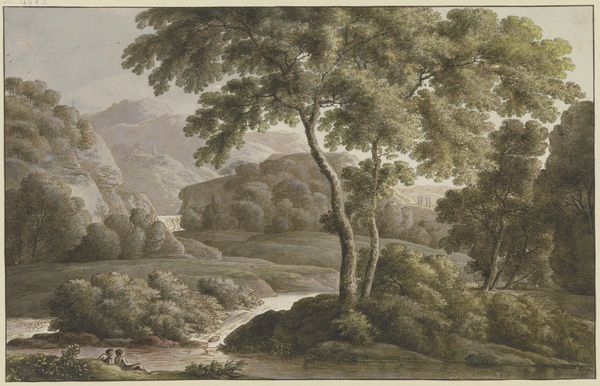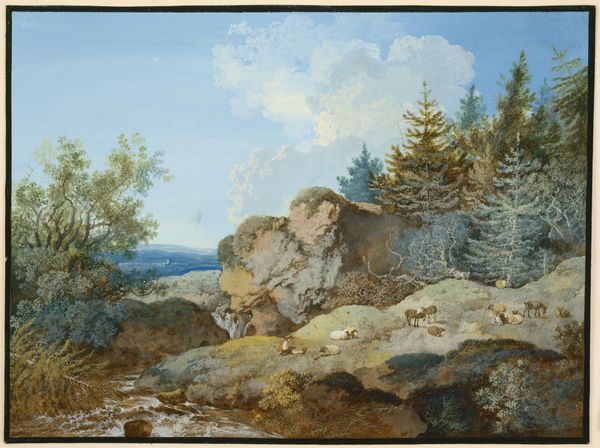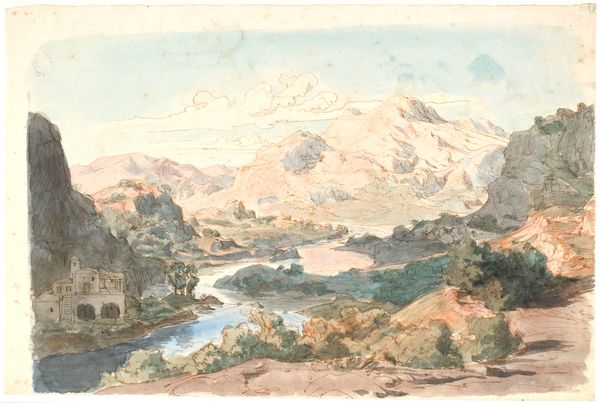
drawing, plein-air, watercolor
#
landscape illustration sketch
#
drawing
#
plein-air
#
landscape
#
watercolor
#
watercolour illustration
#
mixed medium
#
watercolor
Dimensions: overall (approximate): 17 x 12.4 cm (6 11/16 x 4 7/8 in.)
Copyright: National Gallery of Art: CC0 1.0
Curator: Immediately I feel a sense of place, of being rooted and observing the shifting panorama of the natural world, rendered in what feels like the precursor to modern plein-air style. Editor: Yes, it's striking how immediate the impact is. These are two studies of trees done by James Bulwer in mixed media with watercolor. While there's no precise date attached to this work, the style suggests the 19th century, a time when artists were increasingly interested in capturing fleeting atmospheric effects. Curator: The use of watercolour gives it a wonderfully translucent quality, allowing the light to play across the leaves and branches. Trees are a recurring symbol, often representing growth, resilience, and the connection between heaven and earth. Bulwer here feels reverent toward them, a pillar between land and sky. Editor: Agreed. The contrast between the two sketches is interesting; the upper one presents a serene vista, while the lower one conveys a sense of impending weather, the wind suggested through the leaning posture of that one tree. Perhaps it reveals a society facing a sense of constant shifting, in a world rapidly changing through industrial advancements. Curator: Yes, the light! I think it adds an evocative quality to the landscapes, they suggest different emotional states. It shows how the same scene could be read differently at varying times. It’s almost meditative, to represent multiple states side by side like that. Editor: It makes me consider the accessibility of nature. For whom was Bulwer creating this? What commentary was this wealthy landowner making on labor and leisure during the industrial revolution by representing "idle" landscapes? I see the piece within a greater narrative of societal shifts, perhaps. Curator: An astute and thoughtful question. The simplicity allows you to interpret beyond its face value; what feelings does it elicit, and then how do you marry those feelings with historical contexts. Editor: For me, it speaks to a dialogue between social conscience and raw naturalism that transcends a picturesque era. Curator: Ultimately it becomes an interesting window into the period, revealing much about our ongoing relationship to the natural world and to each other, I think.
Comments
No comments
Be the first to comment and join the conversation on the ultimate creative platform.

